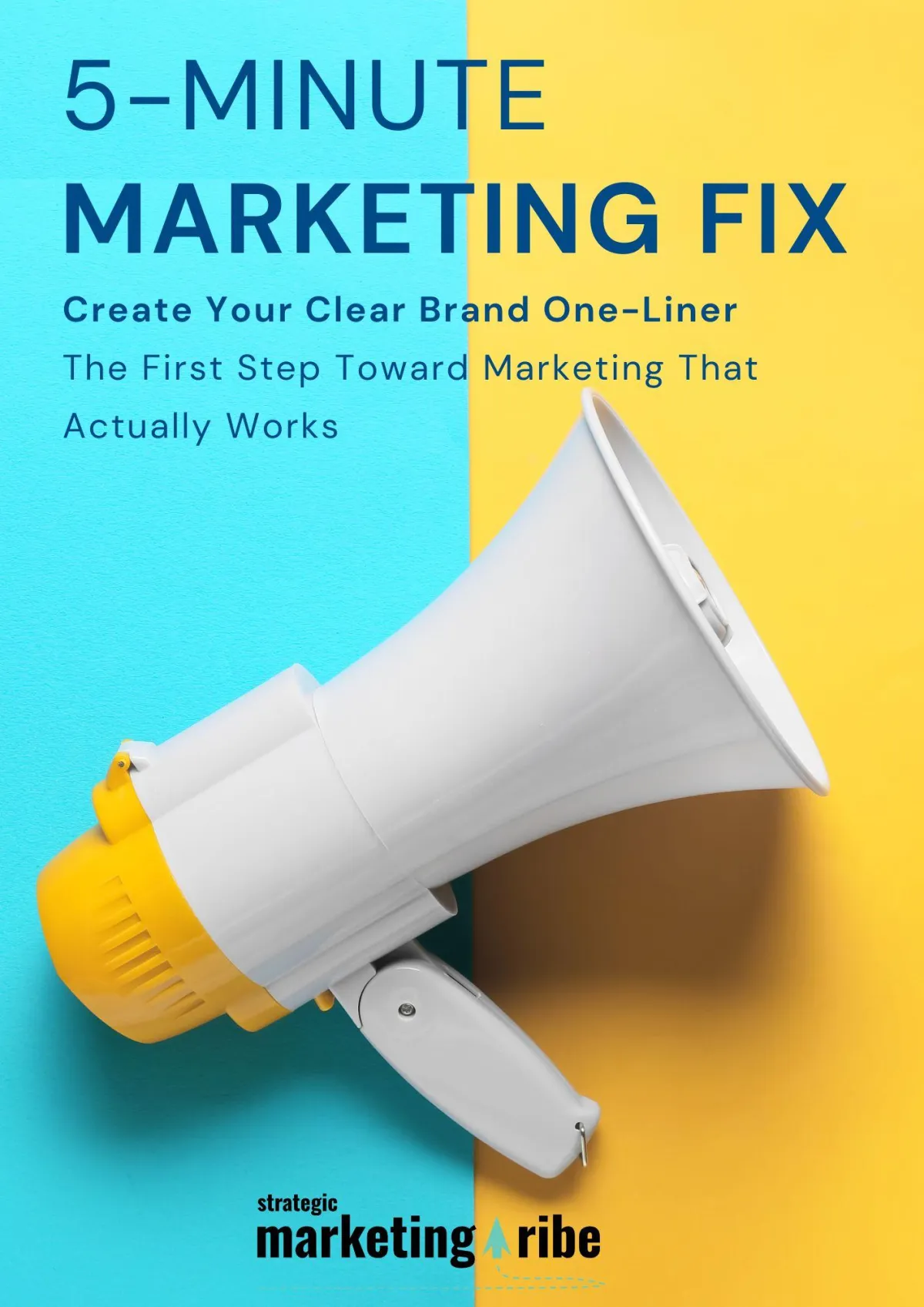STORY, MEET STRATEGY
Let’s make marketing feel less robotic and more real.
Find resources that bring your message—and your business—to life.

OpenAI’s $27B Loss Could Tank the Whole AI Industry
By Vicky Sidler | Published 18 November 2025 at 12:00 GMT+2
If you thought the biggest risk with AI was deepfakes or robots stealing jobs, think again. The real danger might be the spreadsheet.
According to Planet Earth and Beyond, OpenAI—the company behind ChatGPT—is losing so much money, it makes WeWork look frugal. And the fallout could hit more than just Silicon Valley.
Let’s break it down in plain English so you can see what this means for you and your business.
TL;DR:
OpenAI is on track to lose $27 billion this year
They spend $7.77 for every $1 they earn
Infrastructure costs could hit $500 billion
Their main investors are also their biggest suppliers
A talent exodus is weakening their core advantage
If OpenAI fails, the entire AI market could take a hit
👉 Need help getting your message right? Download the 5-Minute Marketing Fix
Table of Contents:
OpenAI’s $27B Loss Could Tank the Whole AI Industry
Mission Drift and Mass Resignations:
Why This Matters for Small Business:
1. OpenAI’s Billion‑Dollar Loop: Is the AI Boom a Bubble?
2. Is Generative AI Worthless? Maybe That’s a Good Thing
3. It’s Not Just You—AI Does Kinda Suck
4. CMOs Bet Big on Generative AI—Here’s What Small Businesses Should Do
5. AI Slop Is Breaking the Internet—Here’s What Small Brands Should Do
FAQs on OpenAI’s Losses and What They Mean for Small Business
1. How much money is OpenAI actually losing?
2. Why is OpenAI losing so much money?
3. What is circular funding, and why is it risky?
4. Why are so many people leaving OpenAI?
5. What happens if OpenAI collapses?
6. Is the entire AI industry in a bubble?
7. Should small businesses stop using AI tools like ChatGPT?
8. How can small businesses prepare for AI uncertainty?
9. How do I write a message that still works even if AI tools go away?
Spending $7.77 to Make $1:
OpenAI made $4.3 billion in the first half of 2025. Sounds good, right? Not when you see they lost $13.5 billion doing it. That’s not just a rough patch. That’s setting your money on fire and then borrowing someone else’s match.
Even with a generous reading of their books, the most optimistic forecast shows $16 billion in annual losses. Less generous math puts it at $27 billion. And this isn’t a one-time thing.
Their “solution”? Build a network of massive data centers called Stargate that could cost up to $500 billion. And then spend hundreds of billions a year just to keep the lights on.
The Investor Merry-Go-Round:
Here’s where things get weird. OpenAI’s biggest investors—like Microsoft and Oracle—are also their biggest suppliers. Microsoft put in $13 billion. OpenAI then used that money to pay Microsoft for cloud services.
Now they’re doing the same thing with CoreWeave. OpenAI is paying billions to CoreWeave and getting some of that money back in the form of stock.
It’s like taking money out of your left pocket, handing it to yourself, and calling it revenue. Only with more zeros and fewer safeguards.
Mission Drift and Mass Resignations:
OpenAI was supposed to be a nonprofit. Then it became a for-profit. Then it became a public benefit corporation. Along the way, it quietly scrapped investor return limits. Now Microsoft owns 27% of the business.
This shift toward profits over purpose hasn’t gone unnoticed. Key staff—including several co-founders and top researchers—have left. Many joined competitors like Anthropic and Google DeepMind.
Hiring is also down. Research jobs once made up 23% of listings. Now it’s just 4.4%. The company’s internal culture is shifting from exploration to monetisation. Which is fine—unless your core advantage was brainpower.
Why This Matters for Small Business:
AI tools like ChatGPT have been useful for small business owners. Quick drafts, fast answers, basic automation—it’s been a game-changer.
But if OpenAI collapses under the weight of its own ambition, you’ll feel it. Expect slower updates, higher costs, and fewer reliable tools.
And if the AI bubble bursts the way economists fear, it won’t just be OpenAI that takes a hit. The whole tech ecosystem—including platforms you depend on—could wobble.
What You Should Actually Do:
Don’t panic. But don’t build your entire marketing system on tools that might not be around in two years either.
Instead:
Keep your message clear and human
Use AI tools to support, not replace, your voice
Build assets you control—your own website, email list, and customer relationships
And if you want a no-fuss way to tighten your message? Get my 5-Minute Marketing Fix. It’s free, fast, and future-proof—even if OpenAI isn’t.
Related Articles:
1. OpenAI’s Billion‑Dollar Loop: Is the AI Boom a Bubble?
Want to understand why OpenAI’s biggest investors are also its biggest customers? This breakdown shows how circular funding is propping up the AI industry—and why it might crack.
2. Is Generative AI Worthless? Maybe That’s a Good Thing
If an $800 billion revenue shortfall doesn’t sound like a small oversight, this article explains why the AI hype train might be a blessing in disguise for small businesses.
3. It’s Not Just You—AI Does Kinda Suck
Still waiting for AI to magically fix your business? This post outlines real‑world reasons AI tools under‑deliver, and why your gut feeling about their limitations probably has merit.
4. CMOs Bet Big on Generative AI—Here’s What Small Businesses Should Do
While the big guys spend millions on AI, this guide breaks down how small business owners can stay competitive—without burning through a VC fund.
5. AI Slop Is Breaking the Internet—Here’s What Small Brands Should Do
If your content feed has felt off lately, this one explains how low‑quality AI content floods the web and shows how you can stand out by staying human.
FAQs on OpenAI’s Losses and What They Mean for Small Business
1. How much money is OpenAI actually losing?
OpenAI is projected to lose $27 billion in 2025. That’s more than double what it expected and means it’s spending $7.77 for every $1 of revenue.
2. Why is OpenAI losing so much money?
Most of the losses come from infrastructure costs. Their Stargate project alone could cost up to $500 billion, not counting the billions already spent on compute from Microsoft, Oracle, and CoreWeave.
3. What is circular funding, and why is it risky?
Circular funding means investors also act as suppliers. For example, Microsoft invested $13 billion in OpenAI, and OpenAI spent much of that back with Microsoft for cloud services. This creates fragile interdependence—if one player falls, it drags the rest with it.
4. Why are so many people leaving OpenAI?
The shift from research to commercial products, plus internal culture changes, has driven out key talent. Several co-founders and senior researchers have joined competitors who offer more mission-driven environments.
5. What happens if OpenAI collapses?
It could trigger a domino effect in the tech industry. Companies like Oracle, CoreWeave, and Nvidia all have massive financial exposure. The result could be delayed products, rising AI costs, and tighter credit for tech startups.
6. Is the entire AI industry in a bubble?
Many economists think so. AI is now responsible for most of the growth in U.S. GDP and S&P 500 returns, but the business models behind it are often unsustainable. If the bubble bursts, the impact could be bigger than the dot-com crash.
7. Should small businesses stop using AI tools like ChatGPT?
Not necessarily. AI tools can still help with speed and structure. Just don’t build your whole business around them. Use them to support your message—not define it.
8. How can small businesses prepare for AI uncertainty?
Keep your brand message clear and human
Don’t rely on one tool or provider
Invest in owned platforms like your website and email list
Use AI tools for support, not replacement
9. How do I write a message that still works even if AI tools go away?
Start with clarity. Use plain language. Speak to your customer’s real problems. If you’re not sure where to begin,download the 5-Minute Marketing Fix. It’ll help you write a one-liner that builds trust—AI or not.

Created with clarity (and coffee)







